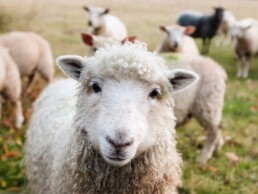In this post, after having seen in another blog entry the different types of additives, we are going to focus on the regulations on additives in animal feed. Specifically, on some of the additives that are used today and the process they had to go through to enter the market.
We start by referring to the Commission Implementing Regulation (EU) 2018/1558 of 17 October 2018. The Lactobacillus Acidophilus preparation (CECT 4529) was used for years as a feed additive for laying hens and broiler chickens. It is one of what we know as zoo-technical feed additives. A few years ago an application was made for its use for cats and dogs. The competent authority concluded that this preparation did not have any adverse effect on animal health, human health or the environment. It also noted that the additive showed an ability to improve the consistency of faeces in cats and dogs. Lactobacillus Acidophilus (CECT 4529) was therefore authorised until 7 November 2028 for cats and dogs as a stabiliser of the intestinal flora.
Some of the most commonly used additives today
On the other hand, the tincture of cumin (Cunicum cyminum L.) was authorised as a feed additive for all animal species, in the category of “organoleptic additives”. Cumin seeds are recognised food flavourings and their function in animal feed is essentially the same as in food. However, this additive contains compounds known to cause allergic reactions in sensitive individuals and therefore appropriate protective measures must be taken. For this reason, Solimix reminds you that the maximum recommended content of this substance should be indicated on the label of the feed additive. Cumin tincture is authorised for all animal species until 7 November 2028 in the group of organoleptic additives and in the functional group of flavouring compounds.
Finally, the dolomite-magnesite preparation was authorised for ten years for dairy cows and other ruminants for milk production, weaned piglets and pigs for fattening in the category of “technological additives”. It has no adverse effects on animal health, human health or the environment. It was therefore authorised until 8 November 2028 in the functional group of anti-caking agents.
In Solimix , we would like to remind that we formulate and/or handle premixes and additives feed with those functionnalities:
-Sensory
-Technological
-Zootechnical
-Nutritonal
If you need an expert manufacturer to manage your product, don’t hesitate to contact us.


